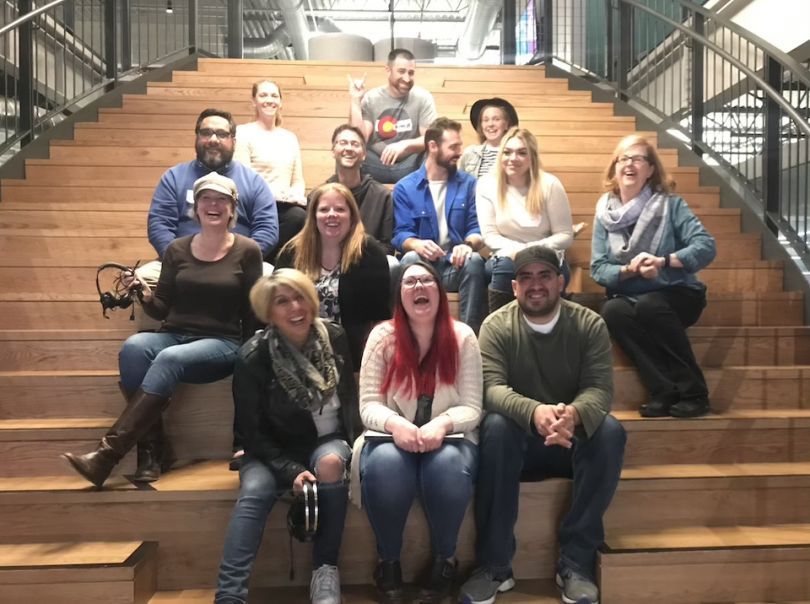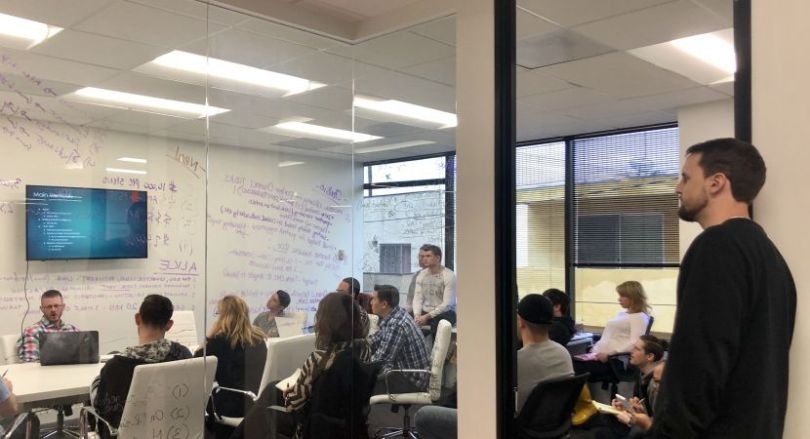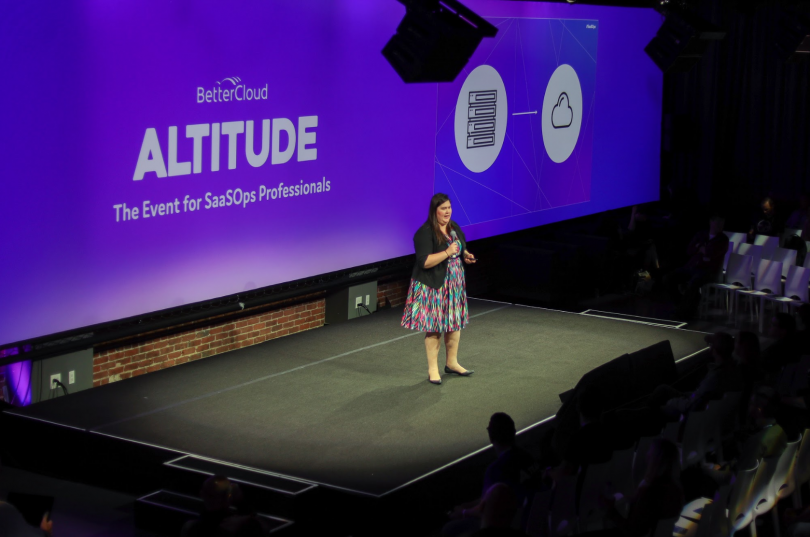Companies love new customers.
But, if a customer doesn’t know how to use the product or is dissatisfied with the experience, they aren’t likely to return — and worse, they’ll influence others about that company’s performance. Enter the customer success team, which ensures clients utilize the most out of company products and have a positive customer experience.
We spoke to nine customer success teams across a wide cross-section of companies to learn more about the customer success metrics they lean on each day to give their clients a great experience.
11 Customer Success Metrics to Know
- Time to Insight
- Customer Independence
- Intended Return on Event (ROE)
- Empty User Account Seats
- At-Risk Churn
- Net & Gross Retention
- Time to First Value
- Customer Effort Score (CES)
- Customer Satisfaction Score (CSAT)
- Activation Rates
- Net Promoter Score Survey

Time to Insight & Customer Independence
dscout
VP of Customer Success Jaymie Wahlen said that in terms of KPIs, her team doesn’t stop at consumer-facing metrics. Managers at dscout keep track of how quickly and accurately the company’s users receive the information they’re looking for, so dscout can consistently improve its research-focused offering.
First, tell us what success looks like for one of your customers. What specific metrics does your CS team use to measure success and why?
As a research company, our clients use our software to understand their customers, inform decisions and design better products. A researcher’s success is all about the impact of their work. But it’s notoriously difficult to measure the ROI of insights. With this in mind, we always start by tailoring our definition of success to align with each customer’s ideal strategic outcomes.
In addition to customer-specific outcomes, we have standard metrics for monitoring health and momentum across accounts. “Time to insight” helps us understand how quickly new researchers have access to insights in dscout. We pair this with a Net Promoter Score to understand their satisfaction and likelihood of recommending dscout. We also monitor the extent to which our customers are utilizing their subscriptions with a series of usage-oriented metrics like quarterly user retention.
"This independence metric shows the extent to which each account relies on our services."
What's one metric you didn't used to track but do now? What prompted your team to start tracking this?
I’m really excited about a new dashboard we’ve created that visualizes customer independence. This independence metric shows the extent to which each account relies on our services. Unlike a lot of customer success teams, dscout research advisors bill hourly and work collaboratively with clients throughout the subscription.
New customers get a lot of value from on-demand service and collaboration, but we’re always working to help them use dscout with more independence as time goes on. Customer independence has become increasingly important over the last year, both for my team’s continued efforts to scale and our product team’s efforts to make our software as intuitive as possible.

Intended Return on Event (ROE)
Bizzabo
In the early days of Bizzabo, Director of Customer Success Hunter Paul carefully tracked how well single events on the platform were executed. The company has since turned its focus to how such events improve a client’s overall bottom line. Paul told us more about why his team has taken that approach and what it has meant to the businesses they work with.
Tell us what success looks like for one of your customers. What specific metrics does your CS team use to measure this success?
Bizzabo helps companies streamline event management while maximizing attendee experience. Due to the nature of professional events, each customer has their own goals and event strategy. So success really looks different for each one. Once we’ve thoroughly discussed the customer’s intended return on event (ROE), we customize our partnership to help them hit the metrics they’ve shared while ensuring they are implementing industry best practices.
In addition to leveraging the customer’s specific ROE metrics, we’ve created a robust tool that measures our customers’ product usage across our entire platform. This tool allows us to highlight areas of our platform that the customer is using most successfully. It also illuminates areas where the customer may need additional resources to decrease the consumption gap.
"We’ve created a robust tool that measures our customers’ product usage across our entire platform."
What’s one metric you didn’t use to track but do now? What prompted your team to start tracking this?
We initially focused much more on measuring the success of a single event or event series. While those metrics are certainly important to us and our customers, we have grown to a point where we can provide a much more valuable metric of how the ROE affects the bottom line for our customers’ entire organization. We made this crucial change in measuring the massive value Bizzabo brings to our customers in order to identify the holistic impact we have across their whole company.

Empty User Account Seats
Monday.com
Monday.com’s online platform allows full teams to collaborate on projects and track their progress — but it only works if everyone involved actually uses it. That’s one of CSM Trey Praytor’s biggest pain points. So he and his colleagues track the number of “empty seats” per account to get an idea of which users they should be focusing on most.
First, tell us what success looks like for one of your customers. What specific metrics does your CS team use to measure this success and why?
While we track product adoption for every client (percentage of users logging in each week and volume of activity in the account), the metrics that signal success for each client are unique to them. During onboarding, we look to uncover their desired outcomes. From there, we partner with them to make progress toward those specific goals.
"The metrics that signal success for each client are unique to them."
What’s one metric you didn’t use to track but do now? What prompted your team to start tracking this?
Empty seats. A teammate of mine, Gilad, made a great case for why this is important to track. When working with several hundred users in an account, the administrative cost of processing a new invoice each time a user or two joins is not sustainable. So, we have clients purchase buckets of seats at a time. Naturally, there will be seats that haven’t been filled yet.
Maybe new team leads are stuck in the initial building stage and haven’t made the jump to invite their whole team to join our platform. Maybe everyone who wants the tool doesn’t know it’s available. Or maybe the value of monday.com hasn’t been fully conveyed. In that case, new users may have been invited but haven’t taken that crucial first step of logging in. All of those scenarios are red flags for us. They’re a sign that it’s time to dive in a little deeper to understand more.

At-Risk Churn
Yello
While the customer success team at Yello is responsible for taking ownership of customer renewal tracking, their designated success metrics allow the entire team to benefit. Lauren Tafoya, manager of customer success, said that weekly “at-risk” meetings enable her reports — as well as executive team members and product-facing employees — to get a better idea of how to retain users, who contribute to the bottom line.
First, tell us what success looks like for one of your customers.
Success for our team means that our customers have made Yello so integral to their recruiting process that it would be difficult to remove any products along the way. We want our key contacts to recognize the value of Yello and be willing to speak about their success or act as references for new customers at events. We measure usage metrics that customers have agreed are important to their business goals, such as the number of candidates captured, the number of candidates scheduled or the percentage of pre-recorded videos completed.
"We measure usage metrics that customers have agreed are important to their business goals."
What's one metric you didn't used to track but do now? What prompted your team to start tracking this?
This year, our customer success team took full ownership of our customer renewals. They were responsible for tracking any known or at-risk churn (new accounts or annual recurring revenue). With this information, we implemented monthly at-risk meetings where we discuss how to save accounts with the full CSM and product teams, as well as executive leadership. These meetings have provided visibility and allowed for collaboration across the organization. Now we can make further improvements and better partner with our customers to drive success.

Net/Gross Retention & Time to First Value
CareerArc
Getting a job is all about “who you know,” including who you know on social media. CareerArc uses social media to connect companies with job seekers. To ensure that companies are getting the most out of their job postings, SVP of Client Success Mark Fordham said that its client success organization plays an invaluable role in the process.
Tell us what success looks like for one of your customers. What specific metrics does your CS team use to measure this success?
In client success, we measure a number of key internal and external success metrics to ensure we align our activities and efforts to the outcomes our customers seek.
For internal metrics, we measure a net promoter score, which ensures that we understand how we’re being perceived and spoken about to other organizations. We also have a client effort score, which measures how easy it is for our clients to work with us. This ensures we have a strong rigor around quickly identifying areas of our service delivery framework that need improvement.
We also look at gross and net retention. We closely track retention both from a gross and net perspective so we can see trends from customers who choose to leave entirely, those who stay with us, and those who grow. We look at this through the lens of thoughtful cohort analysis so we can cluster similar customers and see how they perform against their peers.
The external metrics our customers use are cost per hire, time to fill open positions, employer brand engagement and brand impact.
"[Customers] experience value when their pain points are being addressed and their goals are being achieved."
What's one metric you didn't use to track but do now? What prompted your team to start tracking this?
At CareerArc, we onboard dozens of new clients each month. We track many of the typical onboarding metrics, including customer satisfaction, timeliness, client engagement and initial training and adoption milestones.
The one metric we were tracking, though inaccurately, was a metric known as “time to first value,” which was measured as the amount of time between the close of the sale and when the customer is on board.
Our error was how we were defining “onboarded.” Rather than focusing on measuring the moment when our customers began to experience measurable value from our product, we focused our measurement primarily on the timely activation of the software itself. Though an important date to measure, a client isn’t necessarily seeing the benefits from the tool simply because a system has gone live — they experience value when their pain points are being addressed and their goals are being achieved. Once we reconditioned the team to define those specific goals and pain points upfront, assign and track the specific measurement of those being addressed, we reframed the definition of “onboarded” to that critical moment in time.
After all, that is the way our customers were measuring us, so why not align our thinking to theirs? It has had a transformational effect on how we strategize with our customers, remove barriers to success and summon the collective strength of our entire organization in support of that mission.

Customer Effort Score (CES)
PopSockets
PopSockets’ Senior Customer Service Advocate Joseph Garcia said the company holds itself accountable through a combination of its customer satisfaction and customer effort scores. The latter gives his team visibility into some of the difficulties customers experience when interacting with the company.
What does customer success look like for your customers, and what metrics does your CS team use to measure success?
Customer success to us looks like glowing remarks from our customers all over the world. This includes positive mentions on social media, our homepage and other websites regarding our products and their impact.
However, there are times when what we have provided to our customers is not good enough. Sometimes the product doesn’t perform as intended, we don’t ship on time or we mess up as we try to help a customer. When this occurs, we welcome feedback and embrace the challenge to be better. We also look at our CSAT and strive to always be above the 95 percent customer satisfaction threshold.
"It is possible for the customer to be satisfied but have a very hard time getting there."
What’s one metric you didn’t use to track but do now?
In addition to CSAT, we recently started looking at our CES. This score shows how easy or hard it is for our customers to do business with us. If we were to look at CSAT only, we would miss this very important element. It is possible for the customer to be satisfied but have a very hard time getting there. CES ranges from 1-7 and our goal is to be at 6.5 on a consistent basis.

Customer Satisfaction Score (CSAT)
SumUp
Mora Walsh said the metrics that guide SumUp’s customer success go beyond customer feedback. The head of customer experience said internal data on employee performance helps keep the team working at peak efficiency, which translates to more satisfied customers.
What does customer success look like for your customers, and what metrics does your CS team use to measure success?
We build payment solutions for small businesses across the country, so success for our customers — small business owners — is when their businesses run smoothly. Customer experience is the heart of SumUp, which is why our entire organization works collaboratively to use customer feedback to optimize our products and services. Our Customer Satisfaction Score (CSAT) from our surveys gives us a benchmark understanding of how we’re supporting our merchants. And qualitative responses are monitored daily to make sure every piece of feedback is addressed.
"A happy team means happy customers."
What’s one metric you didn’t use to track but do now?
As we start offering more diverse products and services, we know it’s important to constantly evaluate and optimize customer outreach. That’s why we work with a customer service automation platform to leverage search data from a 24/7 chatbot tool to enhance our customer experience content. At the same time, partners like TixTime provide us with performance data that allow us to optimize the scheduling and workflow of our internal customer experience team. A happy team means happy customers.

Activation Rates
PaymentCloud
PaymentCloud specializes in securing hard-to-place merchant accounts for businesses seeking credit card processing. By focusing on customer service, Operations Team Lead Carolina Barbalace’s team has helped thousands of businesses find solutions through metrics like activation rates, processing history and volume.
First, tell us what success looks like for one of your customers. What specific metrics does your CS team use to measure this success?
While we have an array of different industries our merchants come from, the goal is roughly the same from business to business: allow our merchants to be able to accept payments from their customers quickly, securely and seamlessly.
In order to monitor this, we make sure to view every merchant’s activation rates, processing history and volume. Post-deployment can be a weak link in the chain of our customer success process, but tracking these aspects provides information about which accounts are being used and to what extent.
"Information has become invaluable and allows us to grow without losing sight of our merchants."
What's one metric you didn't use to track but do now? What prompted your team to start tracking this?
Originally, we never kept track of the reasons why some merchants weren’t using their account after it was activated. Despite having access to account activity, reaching out to inactive merchants wasn’t something that we practiced. Since shifting our focus to increased record-keeping and relationship management, these metrics have given us insight into our workflow from the customer’s perspective. This has identified aspects of friction and space for improvement throughout their journey with our team. Information such as this has become invaluable and allows us to grow without losing sight of our merchants.

Net Promoter Score Survey
BetterCloud
Until recently, BetterCloud Customer Success Executive Fran Slattery said that her team was using a single customer satisfaction question to measure how well their services matched consumer demand. Under the company’s new chief customer officer’s leadership, they now employ a net promoter score survey, which Slattery said helps the entire team better understand how their clients view their varying service offerings and product components. But the iteration isn’t ending there.
What specific metrics does your CS team use to measure this success?
We value product adoption, support tickets and feature requests, communication cadence and executive engagement. As CSMs, we need to ensure each of our platform user’s activities aligns with our executive team’s goals (and help broker the conversation when there is a disconnect).
While we try to understand how product adoption increases across the platform, I focus on the features that most directly impact the business objectives the client is trying to solve.
"We value product adoption, support tickets and feature requests, communication cadence and executive engagement."
What does success look like for one of your customers?
Our clients consider us partners rather than vendors. In such a partnership, both organizations should receive and invest equal value –– especially when it comes to commercial terms or people and resource allocation.
We’re both willing to advocate for each other at the organizational level through case studies or reference calls. At a personal level, we participate in 360-degree feedback reviews for end-of-year performance evaluations.
Our organization can clearly articulate why a client chose our solution. We can map our product or solution to specific internal business initiatives. And the client can speak to our value propositions.




